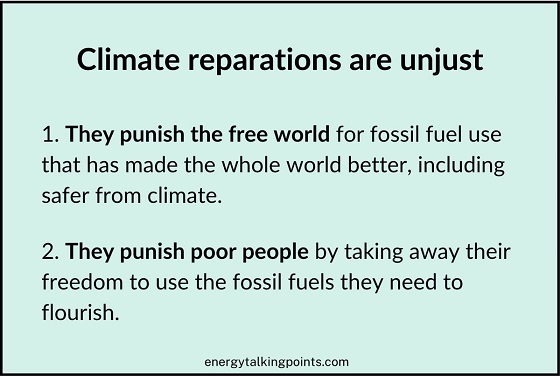Alberta
AI-driven data centre energy boom ‘open for business’ in Alberta

From the Canadian Energy Centre
By Deborah Jaremko and Will Gibson“These facilities need 24/7, super-reliable power, and there’s only one power generation fuel that has any hope of keeping up with the demand surge: natural gas”
Data centres – the industrial-scale technology complexes powering the world’s growing boom in artificial intelligence – require reliable, continuous energy. And a lot of it.
“Artificial Intelligence is the next big thing in energy, dominating discussions at all levels in companies, banks, investment funds and governments,” says Simon Flowers, chief analyst with energy consultancy Wood Mackenzie.
The International Energy Agency (IEA) projects that the power required globally by data centres could double in the next 18 months. It’s not surprising given a search query using AI consumes up to 10 times the energy as a regular search engine.
The IEA estimates more than 8,000 data centres now operate around the world, with about one-third located in the United States. About 300 centres operate in Canada.
It’s a growing opportunity in Alberta, where unlike anywhere else in the country, data centre operators can move more swiftly by “bringing their own power.”
In Alberta’s deregulated electricity market, large energy consumers like data centres can build the power supply they need by entering project agreements directly with electricity producers instead of relying solely on the power of the existing grid.
Between 2018 and 2023, data centres in Alberta generated approximately $1.3 billion in revenue, growing on average by about eight percent per year, lawyers with Calgary-based McMillan LLP wrote in July.
“Alberta has a long history of building complex, multi-billion-dollar infrastructure projects with success and AI data centres could be the next area of focus for this core competency,” McMillan’s Business Law Bulletin reported.
In recent years, companies such as Amazon and RBC have negotiated power purchase agreements for renewable energy to power local operations and data centres, while supporting the construction of some of the country’s largest renewable energy projects, McMillan noted.
While the majority of established data centres generally have clustered near telecommunications infrastructure, the next wave of projects is increasingly seeking sites with electricity infrastructure and availability of reliable power to keep their servers running.
The intermittent nature of wind and solar is challenging for growth in these projects, Rusty Braziel, executive chairman of Houston, Texas-based consultancy RBN Energy wrote in July
“These facilities need 24/7, super-reliable power, and there’s only one power generation fuel that has any hope of keeping up with the demand surge: natural gas,” Braziel said.
TC Energy chief operating officer Stan Chapman sees an opportunity for his company’s natural gas delivery in Canada and the United States.
“In Canada, there’s around 300 data centre operations today. We could see that load increasing by one to two gigawatts before the end of the decade,” Chapman said in a conference call with analysts on August 1.
“Never have I seen such strong prospects for North American natural gas demand growth,” CEO François Poirier added.
Alberta is Canada’s largest natural gas producer, and natural gas is the base of the province’s power grid, supplying about 60 percent of energy needs, followed by wind and solar at 27 percent.
“Given the heavy power requirements for AI data centres, developers will likely need to bring their own power to the table and some creative solutions will need to be considered in securing sufficient and reliable energy to fuel these projects,” McMillan’s law bulletin reported.
The Alberta Electric System Operator (AESO), which operates the province’s power grid, is working with at least six proposed data centre proposals, according to the latest public data.
“The companies that build and operate these centres have a long list of requirements, including reliable and affordable power, access to skilled labour and internet connectivity,” said Ryan Scholefield, the AESO’s manager of load forecasting and market analytics.
“The AESO is open for business and will work with any project that expresses an interest in coming to Alberta.”
Alberta
MAiD In Alberta: Province surveying Albertans about assisted suicide policies

Alberta’s government is launching a public engagement to gather input about legislation and policies around assisted suicide, also referred to as medical assistance in dying (MAID).
Medical assistance in dying is a process that allows an eligible person to receive assistance from a medical practitioner in ending their life. To be found eligible, a person must be suffering from a serious and permanent medical condition.
Alberta’s government is reviewing how MAID is regulated to ensure there is a consistent process as well as oversight that protects vulnerable Albertans, specifically those living with disabilities or suffering from mental health challenges. An online survey is now open for Albertans to share their views and experiences with MAID until Dec. 20.
“We recognize that medical assistance in dying is a very complex and often personal issue and is an important, sensitive and emotional matter for patients and their families. It is important to ensure this process has the necessary supports to protect the most vulnerable. I encourage Albertans who have experience with and opinions on MAID to take this survey.”
In addition to the online survey, Alberta’s government will also be engaging directly with academics, medical associations, public bodies, religious organizations, regulatory bodies, advocacy groups and others that have an interest in and/or working relationship to the MAID process, health care, disabilities and mental health care.
Feedback gathered through this process will help inform the Alberta government’s planning and policy decision making, including potential legislative changes regarding MAID in Alberta.
“Our government has been clear that we do not support the provision of medically assisted suicide for vulnerable Albertans facing mental illness as their primary purpose for seeking their own death. Instead, our goal is to build a continuum of care where vulnerable Albertans can live in long-term health and fulfilment. We look forward to the feedback of Albertans as we proceed with this important issue.”
“As MAID is a federally legislated and regulated program that touches the lives of many Albertans, our priority is to ensure we have robust safeguards to protect vulnerable individuals. Albertans’ insights will be essential in developing thoughtful policies on this complex issue.”
The federal Criminal Code sets out the MAID eligibility criteria, procedural safeguards and reporting obligations. The federal government has paused MAID eligibility for individuals with a mental illness as their sole underlying medical condition until March 2027 to ensure the provincial health care systems have processes and supports in place. Alberta’s government does not support expanding MAID eligibility to include those facing depression or mental illness and continues to call on the federal government to end this policy altogether.
Related information
Alberta
On gender, Alberta is following the science

Despite falling into disrepute in recent years, “follow the science” remains our best shot at getting at the truth of the physical sciences.
But science, if we are to place our trust in it, must be properly defined and understood; it is at its essence an ever-changing process, a relentless pursuit of truth that is never “settled,” and one that is unafraid to discard old hypotheses in the face of new evidence.
And it is in this light—in the unforgiving glare of honest science—that Alberta Premier Danielle Smith’s three new legislative initiatives around gender policy are properly understood, notwithstanding the opprobrium they’ve attracted from critics.
Bill 26, the Health Statutes Amendment Act, proposes to prohibit the prescription of puberty blockers and cross-gender hormones for the treatment of gender dysphoria to youth aged 15 and under. It would allow minors aged 16 and 17 to begin puberty blockers and hormone therapies for gender “reassignment” and “affirmation” purposes only with parental, physician, and psychologist approval. The bill also prohibits health professionals from performing sex reassignment surgeries on minors.
Bill 27, the Education Amendment Act, seeks to enshrine parents’ rights to be notified if their kids change their names/pronouns at school, and it gives parents the right to “opt in” to what sort of gender and sex education their kids are exposed to in school.
And Bill 29, the Fairness and Safety in Sports Act, is designed to protect females in sports by ensuring that women and girls can compete in biological female-only divisions, while supporting the formation of co-ed opportunities to support transgender athletes.
Each of these initiatives is entirely reasonable, given what we know of the science underpinning “gender care,” and of the undeniable advantages that a male physique confers upon biological males competing in sports.
The notion that the trifecta of puberty blockers, cross-gender hormones, and revisionist surgery is a pathway to good health was a hypothesis initially devised by Dutch researchers, who were looking to ease the discomfort of transgender adults struggling with incongruence between their physical appearance and their gender identities. As a hypothesis, it was perhaps reasonable.
But as the UK’s Cass Review exposed in withering detail last spring, its premises were wholly unsupported by evidence, and its implementation has caused grievous harm for youth. As Finnish psychiatrist Riittakerttu Kaltiala, one of the architects of that country’s gender program, put it last year, “Gender affirming care is dangerous. I know, because I helped pioneer it.”
It’s no accident, then, that numerous European jurisdictions have pulled back from the “gender affirming care” pathway for youth, such as Sweden, Finland, Belgium, the Netherlands, and the United Kingdom.
It makes perfect sense that Canadians should be cautious as well, and that parents should be apprised if their children are being exposed to these theories at school and informed if their kids are caught up in their premises.
Yet the Canadian medical establishment has remained curiously intransigent on this issue, continuing to insist that the drug-and-surgery-based gender-affirming care model is rooted in evidence.
Premier Smith was asked by a reporter last month whether decisions on these matters aren’t best left to discussions between doctors and their patients; to which she replied:
“I would say doctors aren’t always right.”
Which is rather an understatement, as anyone familiar with the opioid drug crisis can attest, or as anyone acquainted with the darker corners of medical history knows: the frontal lobotomy saga, the thalidomide catastrophe, and the “recovered memories of sexual abuse” scandal are just a few examples of where doctors didn’t “get it right.”
As physicians, we advocate strongly for self-regulation and for the principle that medical decisions are private matters between physicians and patients. But self-regulation isn’t infallible, and when it fails it can be very much in the interests of the public—and especially of patients—for others to intervene, whether they be journalists, lawyers, or political leaders.
The trans discussion shouldn’t be a partisan issue, although it certainly has become one in Canada. It’s worth noting that Britain’s freshly elected Labour Party chose to carry on with the cautious approach adopted by the preceding administration in light of the Cass Review.
Premier Smith’s new polices are eminently sensible and in line with the stance taken by our European colleagues. None of her initiatives are “anti-trans.” Instead, they are pro-child, pro-women, and pro-athlete, and it’s difficult to see how anyone can quibble with that.
Dr. J. Edward Les, MD, is a pediatrician in Calgary, senior fellow at the Aristotle Foundation for Public Policy, and co-author of Teenagers, Children, and Gender Transition Policy: A Comparison of Transgender Medical Policy for Minors in Canada, the United States, and Europe.
-

 Brownstone Institute10 hours ago
Brownstone Institute10 hours agoThe Most Devastating Report So Far
-

 Economy22 hours ago
Economy22 hours agoCOP 29 leaders demand over a $1 trillion a year in climate reparations from ‘wealthy’ nations. They don’t deserve a nickel.
-

 Censorship Industrial Complex14 hours ago
Censorship Industrial Complex14 hours agoAnother Mass Grave?
-

 Alberta13 hours ago
Alberta13 hours agoMAiD In Alberta: Province surveying Albertans about assisted suicide policies
-

 Alberta20 hours ago
Alberta20 hours agoOn gender, Alberta is following the science
-

 Energy21 hours ago
Energy21 hours agoOttawa’s proposed emission cap lacks any solid scientific or economic rationale
-

 Bruce Dowbiggin9 hours ago
Bruce Dowbiggin9 hours agoCHL Vs NCAA: Finally Some Sanity For Hockey Families
-

 Brownstone Institute2 days ago
Brownstone Institute2 days agoFirst Amendment Blues




